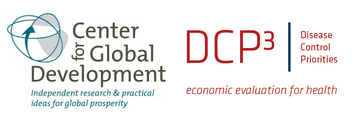CGD and the Disease Control Priorities Network (DCPN) will highlight a new generation of global health success stories it the third edition of Millions Saved: Case Studies in Global Health, set for release in 2016. The first edition of Millions Saved (2004) documented 17 remarkable cases in which large-scale efforts to improve health in developing countries succeeded. The second edition (2007) expanded on this effort, adding new cases that helped explain “what works” in global health. Millions Saved is currently required reading at over 60 universities around the world.

This edition will take advantage of a near decade of global health advances and impact evaluations, and the preparation of a new edition of Disease Control Priorities in Developing Countries (DCP3) volumes from DCPN.
DCP3 is a multi-year project based at the University of Washington Department of Global Health and supported by the Bill & Melinda Gates Foundation that assesses the most up-to-date effectiveness and cost-effectiveness evidence on health interventions, policies and platforms for low- and middle-income countries. DCP2 was instrumental in developing case studies for the second edition of Millions Saved.
Millions Saved 3 will feature 18 new success stories in health, as well as four examples of promising interventions that fell short of their health targets when scaled up in real world conditions. Cases were selected following a comprehensive literature review, expert consultations, public calls for proposals, and consultations with the DCP3 editors, an expert advisory group and other reviewers.
Learn more about our selection criteria and see the shortlist of case studies below.
Selected Cases
Eighteen success stories will be selected from this list to be featured in Millions Saved 3 along with four programs that disappointed.
Medicine and Technology Roll-out
- Expanding Anti-Retroviral Therapy coverage in Botswana
- Rolling out Menafrivac in Africa’s Meningitis Belt
- Hepatitis B prevention in China
- School-based deworming in Kenya
- Malaria control in Zambia
- Piso Firme in Mexico
- Polio eradication in Haiti
- Integrated management of childhood illness in Bangladesh
Increasing Access to Health Services
- Plan Nacer in Argentina
- Paying for performance in Rwanda
- Thailand’s Universal Coverage Scheme
- Brazil's Family Health Program
- Promoting hospital deliveries in India
Targeted Transfers to Improve Health
- Female School Stipend Program in Pakistan
- Child Support Grant in South Africa
- Social Cash Transfers for Orphans and Vulnerable Children in Kenya
- Honduras’ Family Allowances Program
Behavior Change to Reduce Population Risk
- Requiring helmets for Vietnamese motorcyclists
- Targeting HIV prevention: Avahan in India
- Improving rural sanitation in Indonesia
- Tobacco control in Thailand
- Handwashing promotion in Peru
Selection Criteria
A widely-valued trait of the first and second editions of Millions Saved was the application of a clear set of criteria to determine which programs to include. The third edition uses similar criteria as earlier versions, with added emphasis on two new conditions: equity and financial protection. See full explanation of selection criteria here.
- Importance: Interventions should address a problem of public health significance. In this case, mortality, morbidity, or another standardized measure such as burden of disease—disability adjusted life years (DALYs)—is useful as an indicator of importance, but other indicators such as equity or demand on health system resources may be considered.
- Impact: Interventions or programs should demonstrate a positive, significant and attributable impact on population health outcomes (morbidity and/or mortality), using a study design that employs impact evaluation approaches and methods. Demonstration of impact should be quantitative.
- Scale: Interventions should be implemented on a significant scale. In some contexts, this will mean nationwide, but regional or other relevant population scales are acceptable. Programs may be characterized as “national” if they represent a national-level commitment, even if they target a health problem that affects only a limited geographic area or sub-group. Programs implemented on a pilot basis, or in small sub-national areas may be excluded.
- Economic evaluation: Interventions should be highly cost-effective, as determined by a country-based threshold. Additional economic analysis, including cost-benefit and assessments of impact on non-health outcomes, such as financial protection or equity, are strongly desirable.
- Duration: Interventions shall have functioned “at scale” for at least two years. Sustainability, including financial self-sufficiency, will not be a selection criterion.
- Relevance: Case information should be of interest and programmatically relevant in other settings.
- Equity: Priority will be given to programs that are pro-poor and include specific measures to reduce the barrier that prevent sub-populations – those disadvantaged by gender inequality, geography, ethnicity, etc. – from accessing health benefits.
- Financial Protection: Interventions should aim to reduce the financial hardship and impoverishment associated with health problems.
Advisory Group Members
Elie Hassenfeld, GiveWell
Priscilla Idele, UNICEF
Ruth Levine, Hewlett Foundation
Rachel Nugent, Disease Control Priorities Network
Richard Skolnik, Yale University and Results for Development
Damian Walker, Gates Foundation
Reviewers (advised on economics and methods)
Victoria Fan
Willa Friedman
Charles Kenny
Mead Over
David Roodman
Justin Sandefur

